The Iliad starts with the anger of Achilles, but the last words belong to Hector’s funeral.
Thus, then, did they celebrate the funeral of Hector, tamer of horses.
Sourcebook Iliad 24.802-803[1]
However, Casey Dué in Achilles Unbound: Multiformity and Tradition in the Homeric Epics[2] shows that an alternative ending line existed.
The medieval manuscripts and all modern editions, such as that of Munro and Allen’s 1920 Oxford Classical Text, end this way, at Iliad 24.804:
[804] ὥς οἵ γ’ ἀμφίεπον τάφον Ἕκτορος ἱπποδάμοιο.
[804] Thus they celebrated the burial of Hektor, tamer of horses.But it seems that not every Iliad ended this way. A note in the scholia of the eleventh-century CE Townley manuscript (Burney 86) states that “some write” (τινὲς γράφουσιν):
[804] ὥς οἵ γ’ ἀμφίεπον τάφον Ἕκτορος· ἦλθε δ’ Ἀμάζων,
[804a] Ἄρηος θυγάτηρ μεγαλήτορος ἀνδροφόνοιο[804] Thus they celebrated the burial of Hektor, and then an Amazon came
[804a] the daughter of great-hearted man-slaying Ares….
Achilles will fall in love with that Amazon—Penthesileia—as outlined in the plot-summary of the Aethiopis from the Epic Cycle[3]. And Hector had married a woman, Andromache, who has the name of an Amazon. And in an earlier generation, Herakles fought the Amazons, and Theseus encountered Antiope or Hippolyta, another Amazon.
Such stories were often depicted on vase paintings.
The Walters Art Museum, in its description of a black-figure lekythos depicting three Amazons, says:
Amazons are first mentioned in the “Iliad” (6.186) as allies of the Trojans; later authors emphasize their fearlessness and their status as foreigners. They were introduced on Attic vases in the early 6th century BC, and quickly became a popular subject. Early black-figure depictions of Amazons resemble Greek warriors, with one notable difference—their white skin color, which identifies them as “women.” In red-figure vases, the Amazons acquire more feminine features and bodies, and their foreigness is emphasized by their attire: Scythian or Thracian clothing and subsequently Persian garb.
In some places in Greece, Amazons were the object of cult. Jennifer Larson (1995, 111-16) has suggested that despite the fact that they were considered hostile to the Greeks, their complete otherness from the Greek way of life also gave them protective powers and entitled them to be worshiped as heroines.[4]
Fighting between Greeks and Amazons (“Amazonomachy”) were also depicted in sculpture, for example, on the west metope of the Parthenon, although sadly these sculptures are very damaged[5]. They probably depicted the battle between Theseus and the Amazons led by Hippolyta[6]. Similar themes occur on other temples.
In this Gallery we will look at different representations of Amazons.
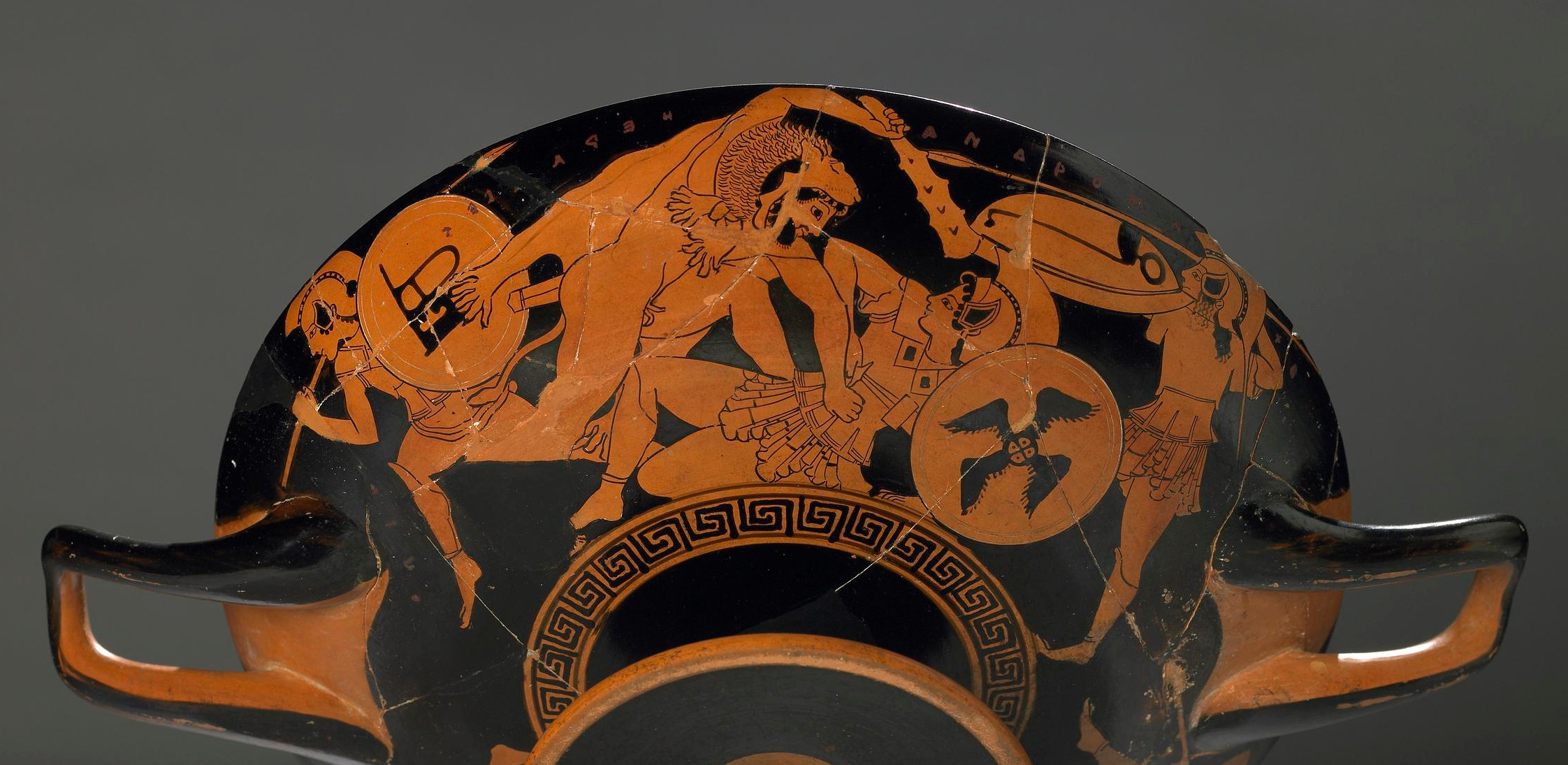

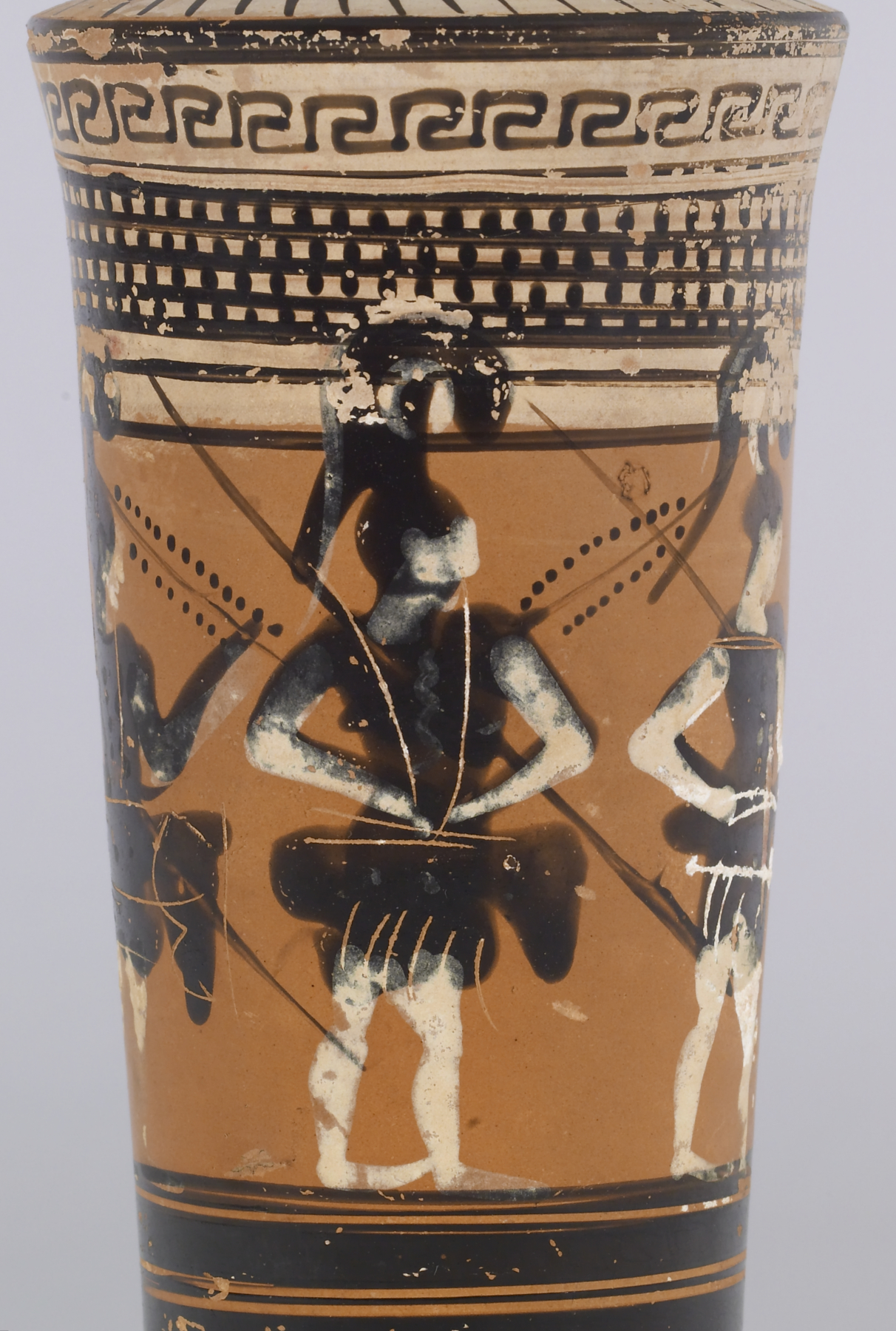

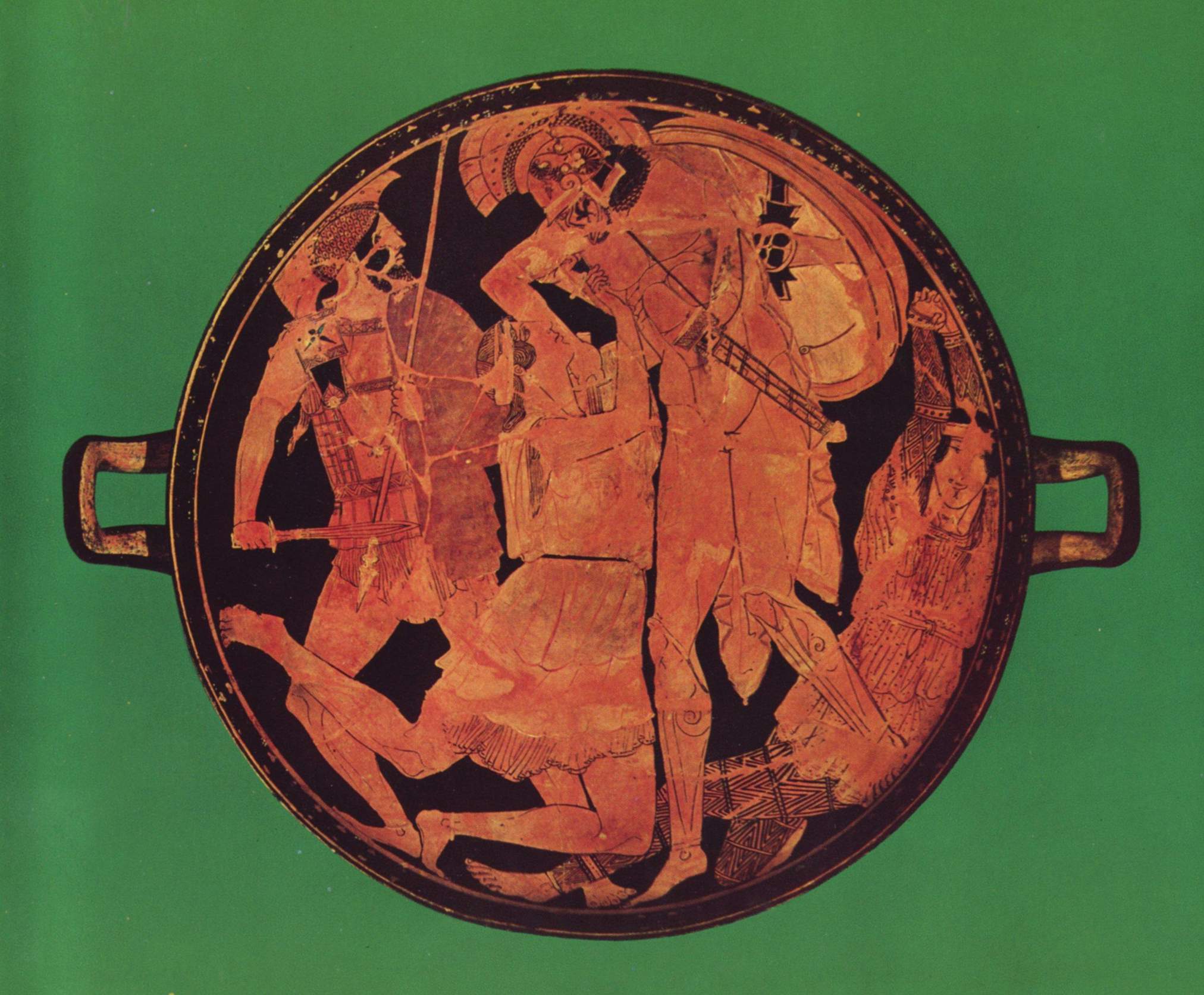

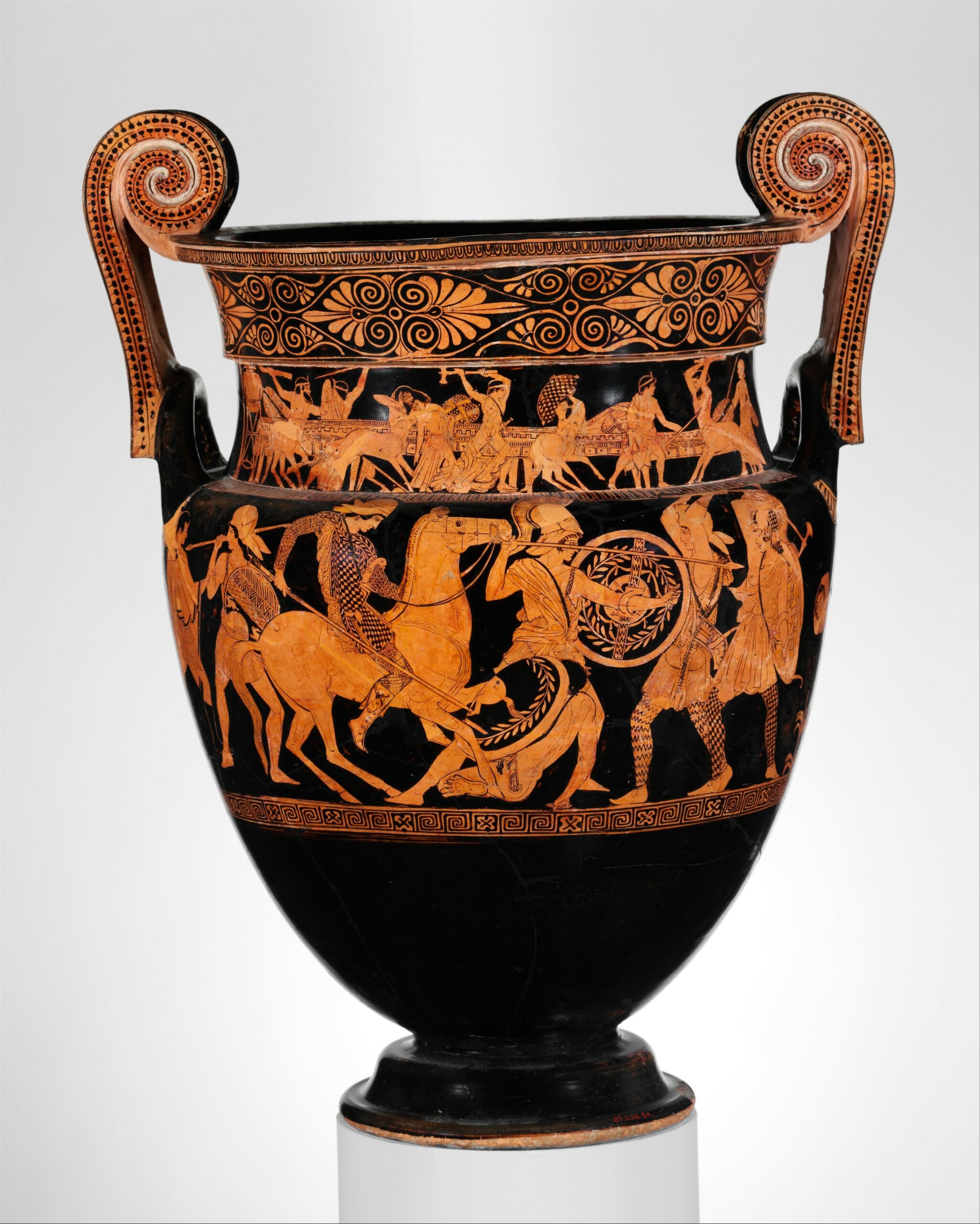
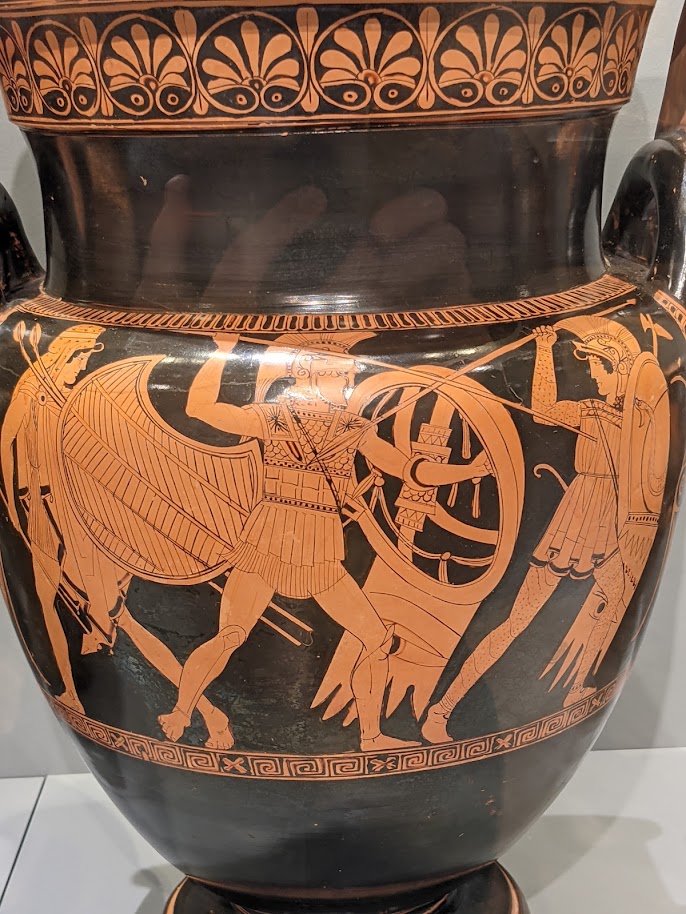



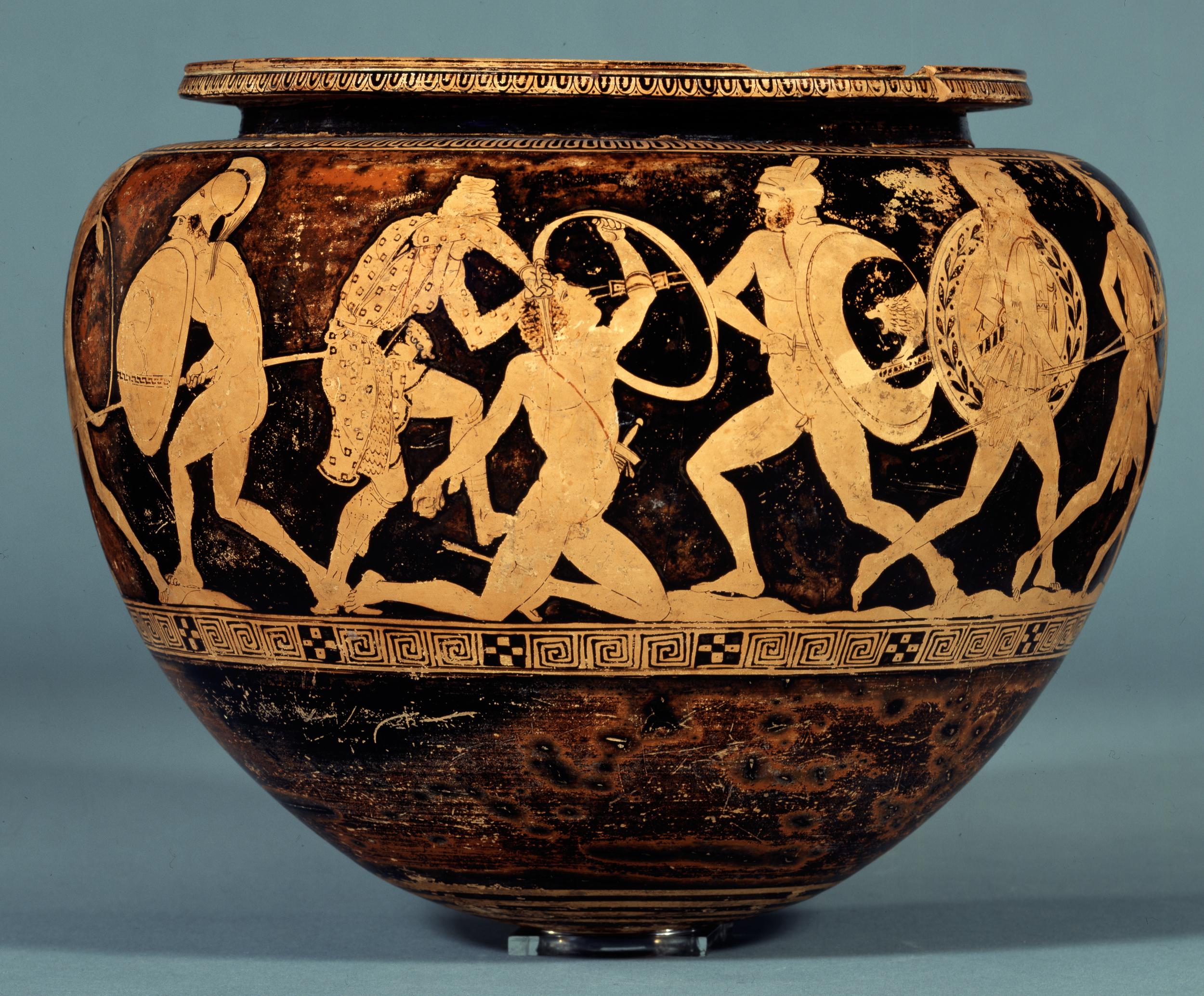
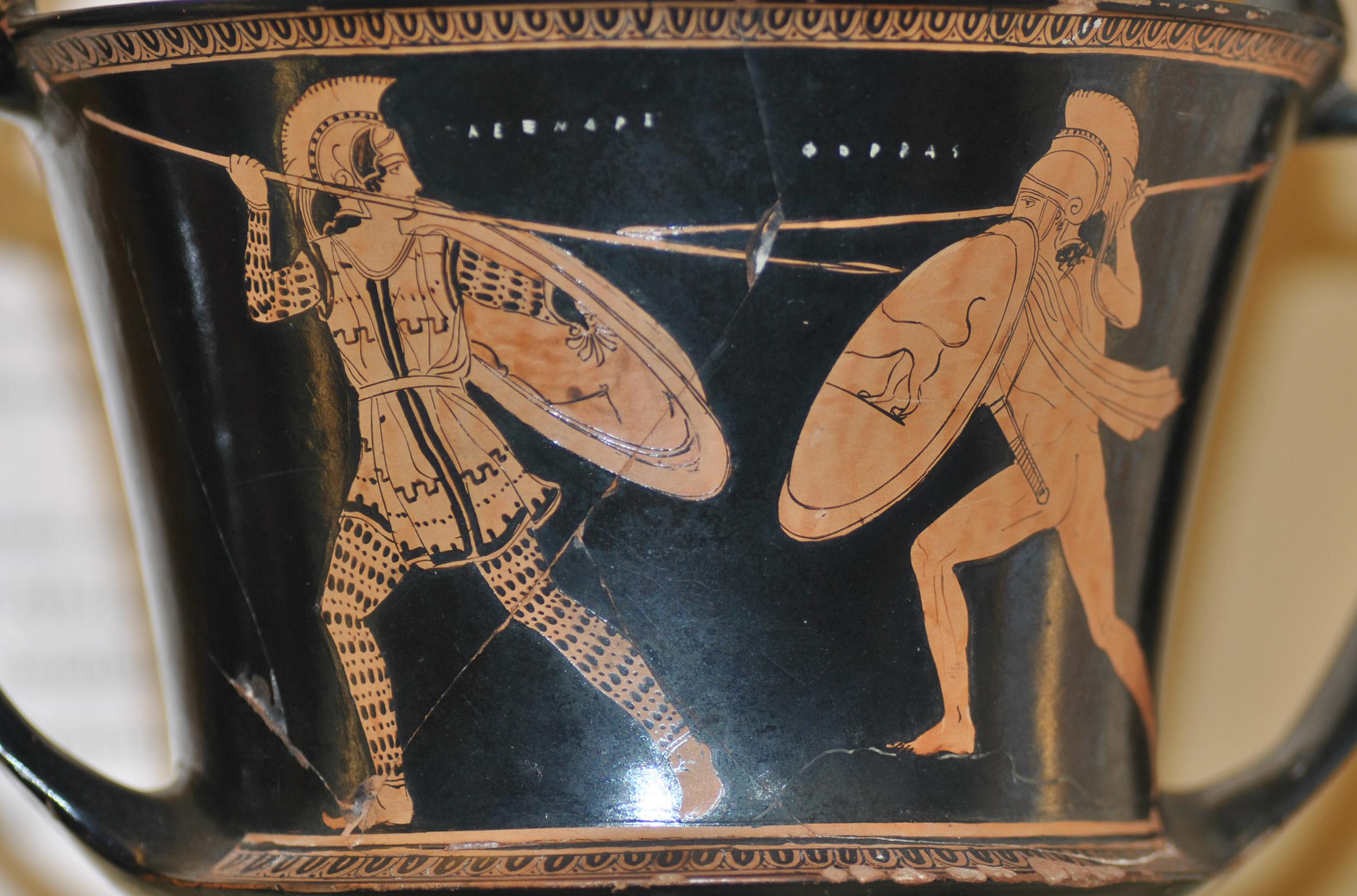

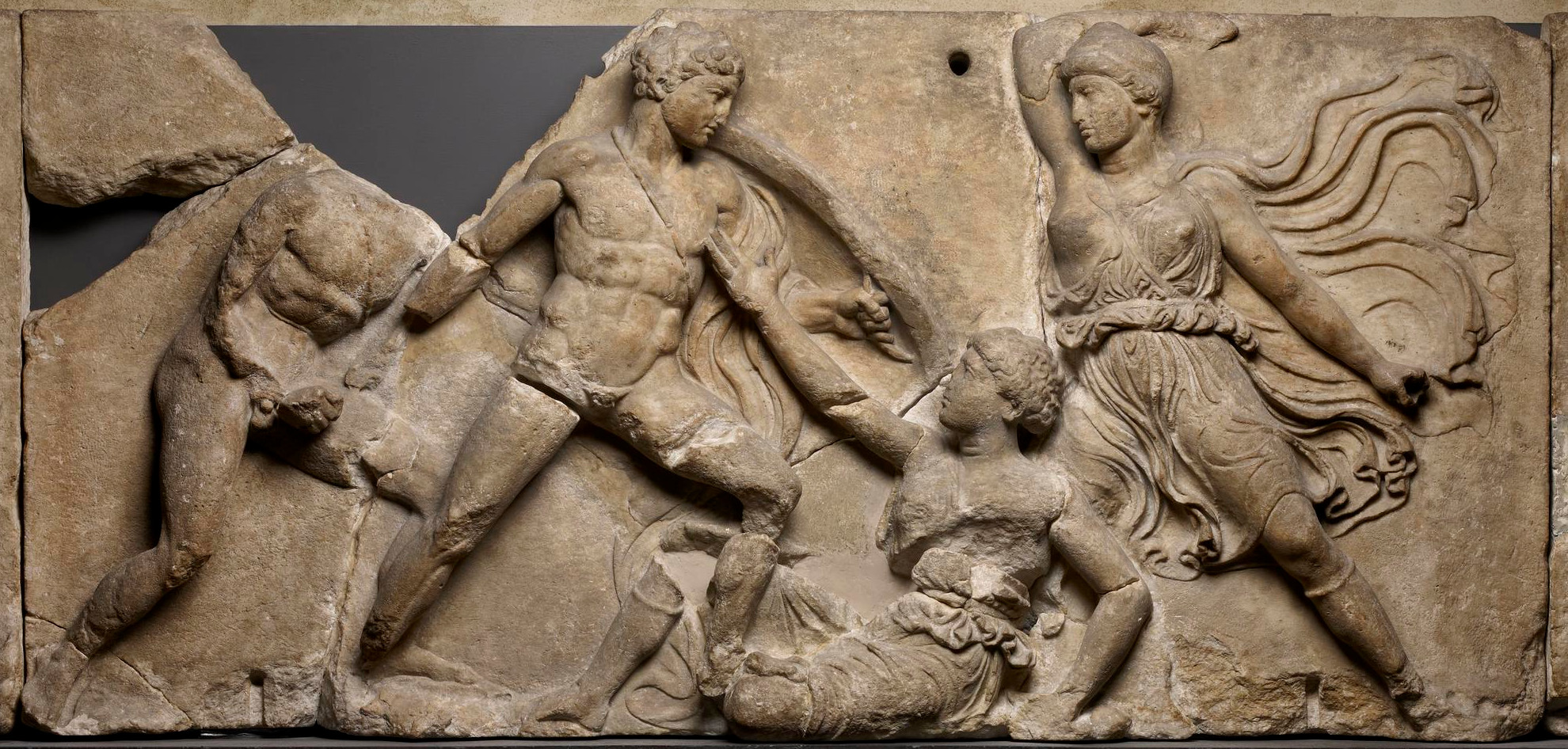
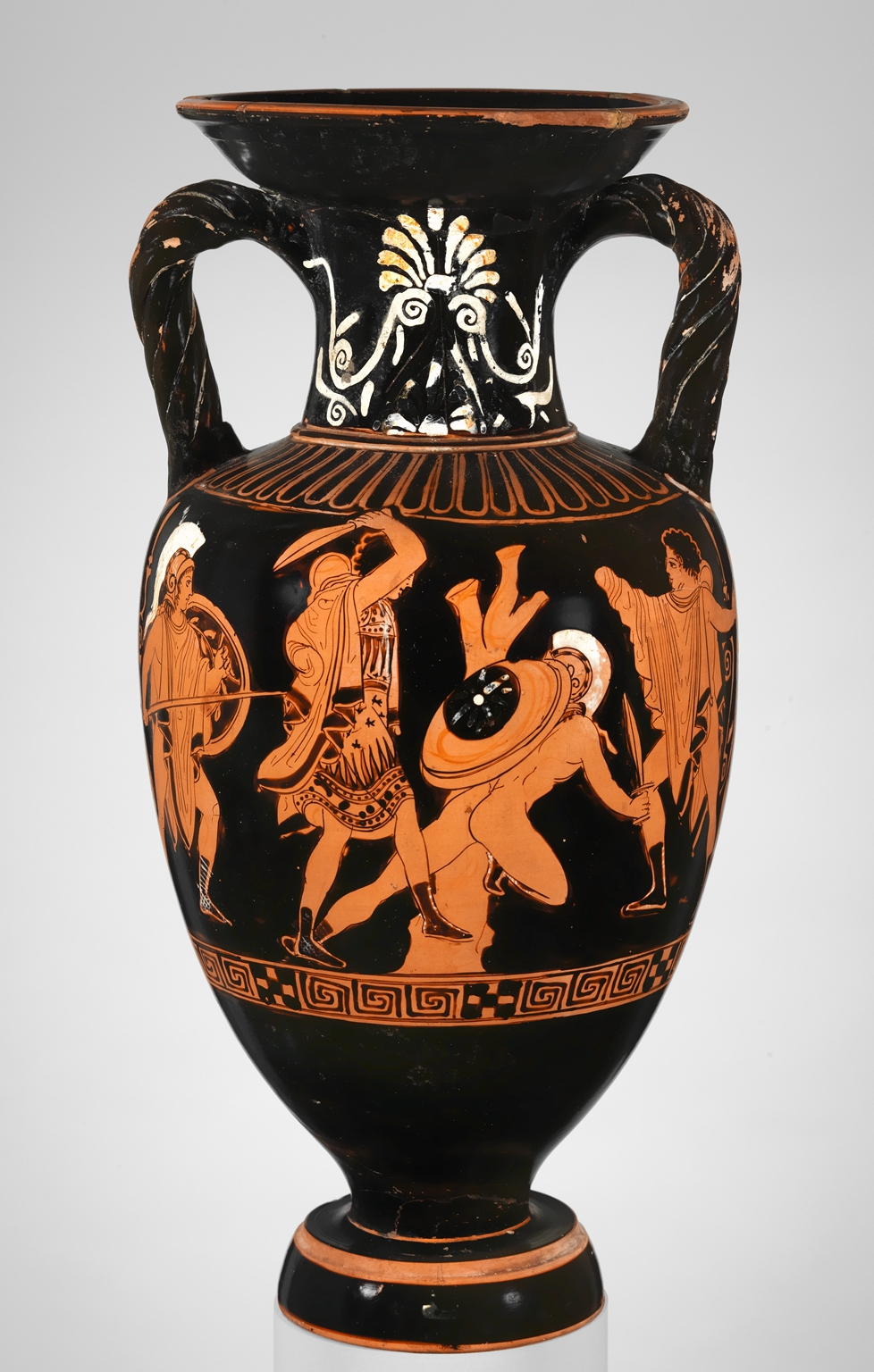


Notes
1 Sourcebook: The Ancient Greek Hero in 24 Hours Sourcebook: Sourcebook of Original Greek Texts Translated into English. Gregory Nagy. 2013.
https://chs.harvard.edu/book/the-ancient-greek-hero-in-24-hours-sourcebook/
Iliad Translated by Samuel Butler. Revised by Soo-Young Kim, Kelly McCray, Gregory Nagy, and Timothy Power.
Online at the Center for Hellenic Studies
https://chs.harvard.edu/primary-source/homeric-iliad-sb/
2 Dué, Casey. 2018. Achilles Unbound: Multiformity and Tradition in the Homeric Epics. Hellenic Studies Series 81. Washington, DC: Center for Hellenic Studies
https://nrs.harvard.edu/urn-3:hul.ebook:CHS_Due.Achilles_Unbound.2018
3 Epic Cycle. Translated by Gregory Nagy, Revised by Eugenia Lao.
Online at Kosmos Society
4 Walters Art Museum: Lekythos with three Amazons
5 Wikipedia article “Amazonamachy”
6 Wikipedia article “Metopes of the Parthenon”
Online resources accessed January 2023.
Image credits
Attributed to Onesimos: Herakles and Amazons. Red-figured cup 510–500 BCE.
Creative Commons Attribution-NonCommercial-ShareAlike 4.0 International (CC BY-NC-SA 4.0) license
© The Trustees of the British Museum
Mannheim Painter: Three Amazons. Attic red-figure oinochoe, 460–450 BCE. From a grave in Orvieto. Reiss-Engelhorn-Museen, Mannheim
Public domain, via Wikimedia Commons
Beldam Painter: Three Amazons. Black-figure lekythos. c 500 BCE. Walters Art Museum
CC0 1.0 Universal (CC0 1.0) Public Domain Dedication, via Walters Art Museum
New York Painter: Amazon with axe and bow. Alabastron c 490 BCE.
Photo: MatthiasKabel. Creative Commons Attribution-Share Alike 3.0 Unported license, via Wikimedia Commons
Penthesilea Painter: Achilles killing Penthesilea. Tondo of an Attic red-figure kylix, 480–460 BCE. Staatliche Antikensammlungen.
Public domain, via Wikimedia Commons
Amazon with shield and quiver. Attic white black-figured alabastron, c 470 BCE. British Museum
Photo: Marie-Lan Nguyen. Creative Commons Attribution 2.5 Generic license, via Wikimedia Commons
Attributed to the Painter of the Woolly Satyrs (namepiece). Amazonomachy. Terracotta red-figure volute-krater (bowl for mixing wine and water), c 450 BCE.
Public domain, via The Metropolitan Museum of Art, New York, Rogers Fund, 1907 (07.286.84)
Their notes say:
“The Amazons are battling the Athenians. Theseus, the mythical king of Athens, is in the center, holding a black shield on his left arm and a spear in his right hand. We don’t know if the Amazon on the horse is Antiope or her sister Hippolyte”
Attributed to Berlin Painter. Achilles slaying Penthesilea. Attic red-figure volute krater, c 450 BCE>. Eskenazi Museum of Art
Photo: Katolophyromai. Creative Commons Attribution-Share Alike 4.0 International license, via Wikimedia Commons
Klügmann Painter: Amazon using a slingshot. Terracotta lekythos (oil flask), c 440 BCE
Public domain, via via The Metropolitan Museum of Art
Attributed to The Group of Polygnotos: red-figured dinos (mixing bowl) 440–430BCE
View 1: Theseus about to kill Andromache, with three mounted Amazons
Creative Commons Attribution-NonCommercial-ShareAlike 4.0 International (CC BY-NC-SA 4.0) license
© The Trustees of the British Museum
Attributed to The Group of Polygnotos: red-figured dinos (mixing bowl) 440–430BCE
View 2: Amazons fighting an unnamed Greek and Akamas
Creative Commons Attribution-NonCommercial-ShareAlike 4.0 International (CC BY-NC-SA 4.0) license
© The Trustees of the British Museum
Attributed to The Group of Polygnotos: red-figured dinos (mixing bowl) 440–430BCE
View 3: Amazon killing Melaneus (?) with Sthenelos coming to help
Creative Commons Attribution-NonCommercial-ShareAlike 4.0 International (CC BY-NC-SA 4.0) license
© The Trustees of the British Museum
Attributed to Alexandre Group. Combat of Phorbas and Alexandra (Greek and Amazon), side B of red-figured kantharos. 430–420 BCE
Creative Commons Attribution-NonCommercial-ShareAlike 4.0 International (CC BY-NC-SA 4.0) license
© The Trustees of the British Museum
Perhaps Shuvalov Painter: Riding Amazon. Side B of an Attic red-figure neck-amphora, ca. 420 BCE. Staatliche Antikensammlungen
Photo: Bibi Saint-Pol. Public domain, via Wikimedia Commons
Fallen Amazon: Bassai Sculptures, 420BC–400BCE
Creative Commons Attribution-NonCommercial-ShareAlike 4.0 International (CC BY-NC-SA 4.0) license
© The Trustees of the British Museum
Attributed to the Suessula Painter: Combat of Greeks against Amazons. Terracotta neck-amphora (jar) with twisted handles, c 400 BCE
Public domain, via via The Metropolitan Museum of Art
Amazon Frieze, from Mausoleum of Halikarnassos. c 350 BCE
Creative Commons Attribution-NonCommercial-ShareAlike 4.0 International (CC BY-NC-SA 4.0) license
© The Trustees of the British Museum
Ancient Roman mosaic: Amazon warrior, armed with a labrys, in combat with a horseman. From Antioch. Louvre. 4th century CE.
Photo: Jacques Mossot. Creative Commons Attribution-Share Alike 4.0 International license, via Wikimedia Commons
Note: Images have been selected from pictures that are freely available with open source or Creative Commons licenses or from photographs sent in by community members for the purpose. The images in this post are intended to suggest the subject, rather than illustrate exactly—as such, they may be from other periods, subjects, or cultures. Attributions are based where possible by those shown by museums, or on Wikimedia Commons, at the time of publication on this website.
Images accessed January 2023
____
Hélène Emeriaud, Janet M. Ozsolak, and Sarah Scott are members of Kosmos Society.